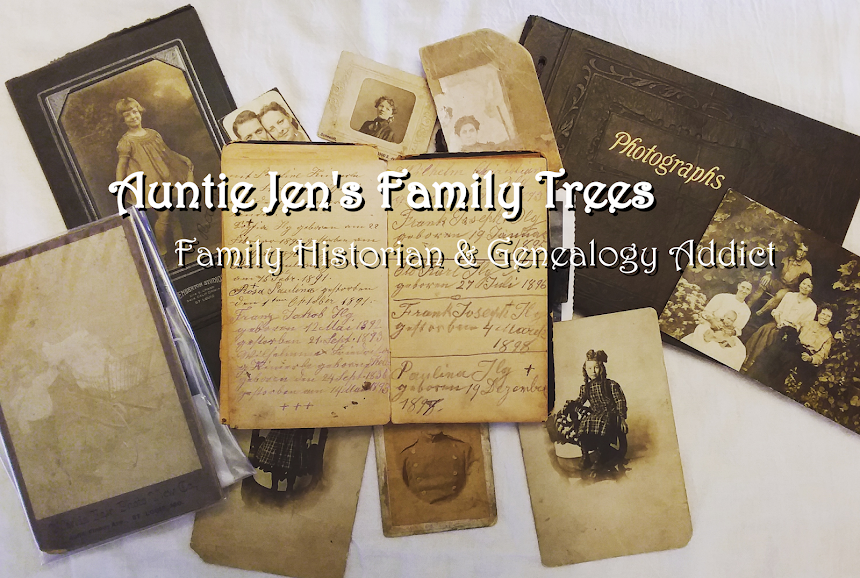What does the "4" mean??
A friend and fellow genealogist, Lisa Buckner from Roam Your Roots, posted a query on her Instagram regarding the Citizenship of Foreign Born column on the 1940 US Federal Census. For this column, if the registrant is of a Foreign Birth, then the Enumerator is to put in this column one of four choices: "Al" for Alien, "Pa" for First Papers, "Na" for Naturalized or "Am Cit" for American Citizen. I learned about this when I was researching a friend's family a few months ago. Pretty straight forward right? Not so fast. Lisa found another option for that column. The number "4". What does that mean?
1940 US Federal Census
Centralia, Marion, Illinois
Ancestry.com
The census above is just a sample. I went looking through the 1940 census from an area local to my ancestors to see if this anomaly appeared in any other locations and it does. Lisa posted about this in our Genealogy Facebook group, GAA (Genealogy Addicts Anonymous) and she got the same responses. So we determined this wasn't an accident. There had to be a reason this number was used. And yet, no one knew what that reason was. And if there was a reason, there had to be instructions somewhere for the Enumerator that explained when to use the number "4". So off to the internet to search for answers.
The first place I checked was the National Archives website (NARA). They have a lot of great resources for understanding records. That's where I first learned about this column and what the different acronyms meant. The NARA website does have the complete Enumerator instructions for the 1940 US Federal Census, so I read through that. Unfortunately, nothing was mentioned about when to use the number 4 in that column. This was the first place Lisa checked as well and came up with the same conclusion.
Instructions to Enumerators
Population and Agriculture - 1940
Pg 47-48
Col. 16: Citizenship of Foreign Born
Back to the drawing board. After that, I checked the Family Search Wiki. They are another great source for learning about records and how to locate them. Unfortunately, they didn't have anything different than what the National Archives website had. There had to be information somewhere that instructed the Enumerators to use the number "4" for this column. Ok, Google, what do you got?
I put in the search bar "1940 US Census Citizenship of Foreign Born" to see if something would come up. Initially, nothing stood out. Then I found this one blog called Ancestor Roundup. I glanced over this post, It Was a 7: One 1940 Census Code Revealed and found a link to another site, IPUMS USA - US Census Date for Social, Economic, and Health Research. This link is to view "the procedural history that explains the post-enumeration coding done by the staff of the Census Bureau" for the 1940 census. This would be what we were working for.
If you scroll down to the section, "Operation 7: Instructions for General Population Coding", Pg 7 Place of Birth and Citizenship, bullet number 45:
Procedural History of the 1940 Census
of Population and Housing
Pg 128/192
"If you are unable to supply a missing entry for a foreign-born person, enter '4' (for unknown) in col. 16. (The code '4' should never be entered in col. 16 for a person reported in col. 15 as born 'At sea,' see par. 43 above.)"
That explains the use of the number "4". If they never received an answer to the question to determine what entry should be given in col. 16, then they put the number "4". You may be asking why would they not have an answer for this column. There could be a number of reasons, but one I am thinking would be is that they never spoke to this person directly and the person giving the information would not know. You have to understand, if an Enumerator could not get information from a family, they could ask a neighbor. And a neighbor more than likely wouldn't have in-depth information like this.
You may be also asking why I chose to write a blog post about this. Honestly, because there was no answer to this question anywhere online. Even on the major sites like the NARA. And given the fact other people on the GAA Facebook page were asking the same question, I felt the answer needed to be shared.
So now we have an answer to the curious question that Lisa Buckner from Roam Your Roots presented. If you haven't checked out Roam Your Roots yet, click on the link above to check out her genealogy travel site. Lisa gives great tips on her blog and provides awesome travel vlogs on her youtube channel. Don't forget to sign up for her newsletter when you visit her page.
Maybe I will take some time and review Census Records for unaddressed topics people may have questions about. If you have some questions about Census Records, post them down below and I will see if I can come up with the answer. Hope this particular entry was helpful to you!









